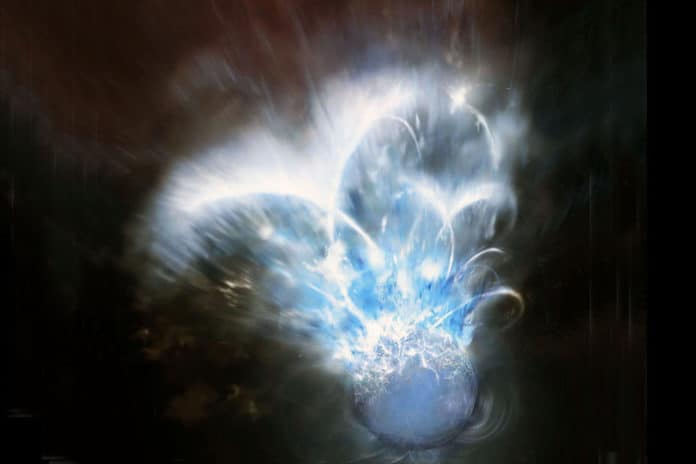An international scientific group with outstanding Valencian participation, for the first time, measured oscillations in the brightness of a magnetar during its most violent moments. Within just the 10th of a second, the magnetar released energy equivalent to that produced by the sun in 100,000 years.
Magnetars suffer violent eruptions that are still unknown due to their unexpected nature. The duration of their eruption of barely 10ths of a second. Detecting them is a challenge for science and technology.
For two decades, scientists have wondered if high-frequency oscillations exist in the magnetars. In this new study, scientists measured the oscillations in the brightness of the magnetar during its most violent moments. These episodes are a crucial component in understanding giant magnetar eruptions.
Lead researcher Alberto J. Castro-Tirado, from the IAA-CSIC said, “Even in an inactive state, magnetars can be 100,000 times more luminous than our sun, but in the case of the flash that we have studied—GRB2001415—the energy that was released is equivalent to that which our sun radiates in 100,000 years.”
Víctor Reglero, professor of Astronomy and Astrophysics at the UV, said, “The explosion of the magnetar, which lasted approximately a 10th of a second, was discovered on April 15, 2020, amid the pandemic. Since then, we have developed very intense data analysis work since it was a 10 ** 16 Gauss neutron star located in another galaxy. A true cosmic monster.”
According to scientists, eruptions in magnetars happen due to instabilities in their magnetospheres or to a kind of “earthquake” produced in their crust.
Alberto J. Castro-Tirado said, “Regardless of the trigger, a type of wave is created in the star’s magnetosphere—the Alfvén—which are well known in the sun, and which interact with each other, dissipating energy.”
Scientists noted, “The oscillations observed in the eruption are compatible with emission caused by the interplay of Alfvén waves. The crust quickly absorbs the energy within the Alfvén waves.”
“The magnetic reconnection process, and hence the pulses identified in GRB2001415, ends in a few moments, fading 3.5 milliseconds after the initial burst. The volume of the explosion was estimated to be similar to or even more than that of the neutron star itself, based on the examination of the phenomena.”
Scientists made this observation using an AI system developed at the Image Processing Laboratory (IPL) of the University of Valencia. They detected the eruption by the ASIM instrument, which is onboard the International Space Station (ISS).
Reglero said, “The detection of quasi-periodic oscillations in GRB2001415 was quite a challenge from the point of view of signal analysis. The difficulty lies in the brevity of the signal, whose amplitude rapidly decays and becomes embedded in background noise. And, as it is correlated noise, it is difficult to distinguish its signal.”
“The artificial intelligence system, together with sophisticated data analysis techniques, allowed the researchers to detect this spectacular phenomenon.”
“Although these eruptions had already been detected in two of the 30 known magnetars in the galaxy and other nearby galaxies, GRB2001415 is the most distant magnetar eruption captured to date, located in the Sculptor group of galaxies about 13 million light-years away. Seen in perspective, it has been as if the magnetar wanted to indicate its existence to us from its cosmic solitude, singing in the kHz with the force of a Pavarotti of a billion suns.”
The eruption offers an essential component for understanding how magnetic stresses are produced in and around a neutron star. Continuous monitoring of magnetars in nearby galaxies will help to understand this phenomenon. It will also offer a detailed understanding of fast radio bursts, currently among the most enigmatic phenomena in astronomy.
Journal Reference:
- A. J. Castro-Tirado et al., Very-high-frequency oscillations in the main peak of a magnetar giant flare, Nature (2021). DOI: 10.1038/s41586-021-04101-1
